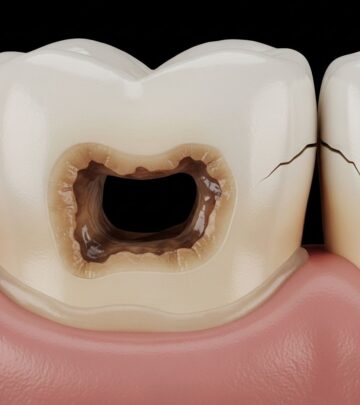Colic in Infants: Understanding, Soothing, and Managing Persistent Crying
Gain a comprehensive understanding of infant colic, its causes, symptoms, and effective soothing techniques for parents and caregivers.

What is Colic?
Colic is a common condition affecting infants, recognized by extended periods of intense, frequent crying and apparent discomfort in babies who are otherwise healthy and well-fed. Typically, colic begins within the first weeks of life and can persist until the baby is around four to six months old. Colic can be challenging for both infants and caregivers, but it is not harmful in the long term and generally resolves on its own.
How Common is Colic?
Colic affects about 10% to 40% of all infants globally. It is equally common in boys and girls, and in breastfed as well as formula-fed babies. While the episodes of crying often seem sudden and unexplained, colic is part of a normal developmental phase for some infants.
What Causes Colic?
The exact cause of colic is not well understood, making it a subject of ongoing research. Several factors may contribute to colic, including:
- Digestive issues such as excessive gas or sensitivity to certain proteins in either breastmilk or formula.
- Immature digestive system which can lead to difficulty processing food or gas discomfort.
- Overstimulation of the baby’s senses during the day, making them more irritable in the evening.
- Possible sensitivities to light, sound, or touch.
- Emotional stress—both the infant and their caregivers can influence crying patterns.
- Allergic reactions to foods in a breastfeeding mother’s diet or to ingredients in formula.
While specific medical causes such as gastrointestinal reflux or milk allergies can result in similar symptoms, true colic is diagnosed only after these have been ruled out.
Symptoms of Colic
Babies with colic typically exhibit intense and frequent episodes of crying, which often:
- Start suddenly and may last for more than three hours at a time, at least three days a week for three weeks or longer.
- Occur around the same time every day, most often in the late afternoon or evening.
- Sound urgent or high-pitched, indicating discomfort or pain.
- Do not seem related to basic needs such as hunger or a dirty diaper.
Other signs and behaviors often seen with colic include:
- Clenched fists and stiffened arms or legs.
- Reddened face and furrowed brow during crying episodes.
- Passing gas or burping frequently.
- Tight or bloated abdomen.
- Temporary relief sometimes after passing gas or stool.
Colic and Constipation
Some infants may also experience constipation alongside colic. Parents should consider seeking advice if their baby has:
- Infrequent bowel movements (less than twice a week).
- Difficulty or discomfort while pooping.
- Stool that appears hard, dry, or larger than usual.
How is Colic Diagnosed?
There is no specific test for colic. Diagnosis is generally made based on the pattern of crying and by ruling out other possible causes for the distress. Your child’s healthcare provider will:
- Ask about the frequency and severity of your baby’s crying episodes.
- Review your baby’s feeding habits, stool patterns, and overall health.
- Perform a physical examination, noting signs like energy levels, skin color, breathing patterns, body temperature, and weight gain.
- Occasionally recommend tests to rule out conditions such as ear infections, gastrointestinal problems, or urinary tract infections.
How is Colic Treated?
Since the precise cause is unknown, there is no single cure for colic. Treatment focuses on soothing strategies and managing the baby’s environment and routines. Approaches may include:
- Feeding Practices: Ensure the baby is fed regularly but not overfed. For breastfeeding mothers, consult a doctor about any possible foods or medications that may be irritating to the baby.
- Burping and Positioning: Burp your baby often during and after feeds to minimize swallowed air, and change holding positions to see what is most comfortable for your baby.
- Gentle Motions: Rocking the baby, taking them for a stroller or car ride, or holding them close may help soothe them.
- Swaddling: Gently wrapping the baby in a lightweight blanket can make them feel more secure and reduce fussiness.
- Pacifiers: Sucking on a pacifier may provide comfort and distraction.
- White Noise: Background noise, such as a fan, vacuum cleaner, or recorded heartbeat, can help calm a crying baby.
- Warm Bath: A warm bath can sometimes help relax and comfort the infant.
Dietary Changes
- Some studies suggest changing to a hypoallergenic (casein hydrolysate) formula for formula-fed babies, or a low-allergen diet for breastfeeding mothers if diet seems implicated.
- Soy-based formulas are not generally recommended for treating colic.
Medications and Supplements
- Simethicone: This anti-gas medication has not demonstrated significant effectiveness in controlling colic symptoms compared to placebo.
- Dicyclomine: Effective but contraindicated in infants under 6 months due to serious safety risks, including respiratory and neurological side effects.
- Cimetropium bromide: Has shown some efficacy, but available data is not robust enough for routine use.
Probiotics, lactase enzymes, and fiber-enriched formulas lack consistent scientific support for effectiveness in colic treatment.
Alternative Therapies
- Herbal Teas: Early research hints at some beneficial effects from teas like chamomile or catnip, but wide variation in preparations and lack of safety data limit their recommendation.
- Massage: Gentle abdominal or body massage may reduce the frequency or severity of crying episodes and supports bonding between parent and child.
Home Remedies and Soothing Strategies for Colic
Since every baby is different, it may take patience and experimentation to find the best technique. Here are proven methods:
- Change Positions Frequently: Hold your baby upright, lay them across your knees on their stomach, or try gentle walking or swaying motions.
- Skin-to-Skin Contact: Holding your baby with bare skin against your skin can increase soothing and comfort.
- Swaddle: Wrapping your baby snugly in a soft blanket often calms fussy infants.
- Pacify: Offer a pacifier or allow your baby to suck on your clean finger if breastfeeding is not immediately possible.
- Use Motion: Soft bouncing, rocking, or taking your baby for a walk in a stroller may help.
- White Noise: Household devices like a vacuum, fan, or sound machine can be soothing.
- Tummy Time: During awake periods, gently lay your baby on their tummy across your knees and rub their back (always supervise, and ensure baby is placed on their back for sleep).
The “5 S’s” for Calming a Colicky Baby
- Swaddling
- Side/Stomach Position (while holding the infant for soothing, not for sleep)
- Shushing (or soothing white noise)
- Swinging (gentle, rhythmic movement)
- Sucking (through pacifier or breastfeeding)
Many colicky infants respond best when several of these elements are used simultaneously.
Massage for Colic
Scientific evidence is limited, but gentle belly or body massage may:
- Sooth crying episodes and help your baby relax.
- Promote parent-infant bonding and deepen emotional connections.
- Help parents feel more in-sync with their baby’s cues and needs.
Massage can be tried cautiously, ensuring the baby remains comfortable and alert.
Colic and Sleep Safety
Crying babies may be soothed in various positions, but safe-sleep guidelines are vital:
- Infants should always be placed on their backs to sleep to reduce the risk of Sudden Infant Death Syndrome (SIDS).
- Never leave a baby unattended on their stomach or side, and always transfer them to their back if they fall asleep while being soothed in another position.
How Long Does Colic Last?
The distressing symptoms of colic almost always improve with time. Most babies demonstrate major relief by the time they are four months old, with some persistence up to six months. Colic does not cause long-term health issues, and most infants outgrow it as their digestive and nervous systems mature.
What Can Parents and Caregivers Do?
Colic can be emotionally taxing for parents and caregivers. Consider these tips:
- Seek support: Don’t hesitate to ask family, friends, or your pediatrician for help.
- Take turns: If possible, alternate soothing responsibilities with another caregiver.
- Prioritize self-care: A short walk, rest, or even a moment alone can help you recharge.
- Be patient: With time, colic episodes will likely decrease in frequency and severity.
When to Call a Doctor
- Persistent crying that lasts much longer than usual or seems to be getting worse.
- Any vomiting, diarrhea, fever, poor feeding, or signs of illness accompanying the fussiness.
- Signs of dehydration (few wet diapers, dry mouth, excessive sleepiness).
- Concerns about your baby’s growth, development, or well-being.
It’s always appropriate to consult your pediatrician if you have concerns or questions about your baby’s health or behavior.
Frequently Asked Questions (FAQs)
Q: Is colic dangerous for my baby?
A: Colic is not dangerous or harmful to an otherwise healthy baby and does not lead to long-term health problems.
Q: How long does an individual colic episode usually last?
A: Crying spells may last several hours and tend to repeat daily, commonly in the evenings. Most babies improve by 4–6 months of age.
Q: Are there any proven medications for colic?
A: No medication is definitively proven to treat colic safely and effectively. Most remedies focus on soothing and supportive care.
Q: Does changing formula help colic?
A: Some babies may benefit from hypoallergenic formulas if milk protein allergy or sensitivity is suspected, but most do not require a change.
Q: Should I try herbal or alternative remedies?
A: There is not enough safety evidence to recommend most herbal remedies. Always consult your healthcare provider before trying alternative therapies.
Key Points to Remember
- Colic is marked by frequent, unexplained crying in healthy infants, typically emerging within the first weeks of life.
- The cause is uncertain, and treatments seek to soothe symptoms rather than cure the underlying issue.
- Most infants outgrow colic without lasting effects by four to six months of age.
- Parental support, patience, and use of calming techniques can help families ride out this challenging stage.
References
Read full bio of medha deb












